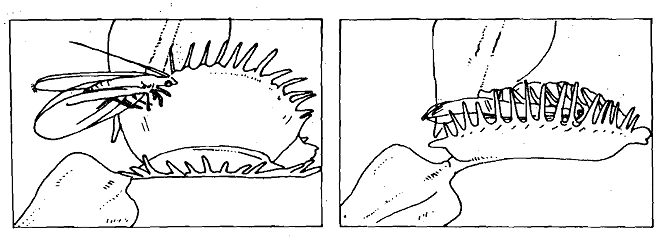Irritability
If a bright torch of light is flashed across your eyes, you close your eyes instinctively. The bright light acts as a stimulus (pl, stimuli) and closing your eyes is the response or irritability. Irritability is the organism's response to a stimulus by complex adaptive activity, and is one of the most important characteristics of living organisms. All living, things are capable of responding to different kinds of stimuli. Some of the common stimuli are light, heat, gravity, sound and various chemicals. The stimuli may be external i:e., in the environment outside the body or internal i.e., in the environment within the cells or around the cells but within the body. In higher animals there are highly special sense organs for-receiving specific stimuli, as the human eye or ear.
In simple organisms, such highly specialized organs or even specialized cells may be absent, though the whole organism may respond to stimuli. At first you may think that plants do not respond to stimuli. However, on close examination you will note that plants also respond to stimuli such as light, gravity and water by orienting their growth towards or away from the stimuli. Some plants, like Mimosa (sensitive plant), Venus's fly trap respond to touch just like animals. Response of an organism to stimuli involves coordination. Even the simplest organism consists of several parts and each of these must do the right thing and work in harmony for an adaptive response. In animals, nervous and endocrine systems coordinate to bring about responses accomplished by the effectors. Muscle and glands are the important effectors in animals. Plants have no nervous system and rely mainly on hormones for their coordination. The ability to respond to stimuli or Irritability is not shown by non-living things.

Figure: A few plants, such as the Venus's flytrap, can respond to the touch of an insect by trapping it This figure shows a leaf of the Venus's flytrap attracting and capturing an insect. The leaves of this plant have a scent that attracts insects. When trigger hairs on the leaf surface sense the presence of an insect, the leaf, hinged along its midrib, folds. The edges come together and hairs interlock, preventing the prey from escaping. The leaf then secretes enzymes that kill and digest the insect.